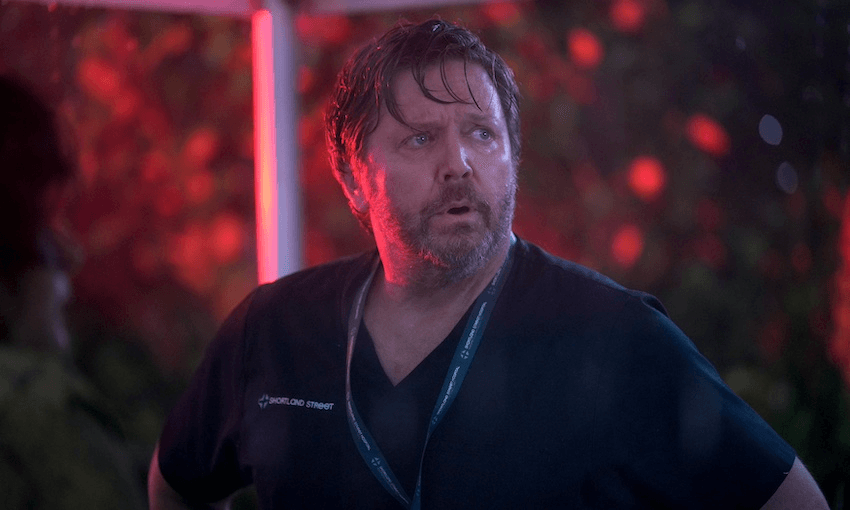There are over 350 minutes of Married at First Sight Australia a week on Three. Should you spend almost all your spare time watching them?
Married at First Sight Australia returned this week, a few months after our first season ended in the abyss. Of our six couples, only one survived the show, which became a grim catalogue of all the casual cruelties strangers can inflict on one another when slammed from zero to marriage in a matter of hours.
It’s strange but also entirely possible to know the likely fate of these couples while also mooning over this fresh batch, watching these wounded humans tentatively opening their hearts again. The first episodes feature pocket biographies of the couples, testimony from the ‘experts’ who pair them up, then the marriages and receptions.
When they go well, it’s an absolute joy. Sarah is 38, a Greek Australian who accurately describes her look as ‘Boglam’. She’s big hair, big eyes, a big scar from a previous relationship and a bigger desire to have kids right now, thanks. On her way in, with her hyper-protective brothers, she frets about her Spanx riding up and whether he’ll find her attractive.
Across the aisle is Telv, a “proud Aboriginal man” and “typical tradie, rough as guts”. He appears sweet, but it’s always hard to get a read on the show’s men – how they respond on first sight tends to be the tell.
Telv’s eyes, always bulging, nearly pop out of his head when he sees his bride. “The experts have absolutely nailed it” he says, delightedly. From there on in, despite the tension of whether Sarah’s minor Mafioso-looking brothers will accept him, their storyline glides on serenely. Whether it’s reality or just a crafty edit, they appear lifers already.
Same goes, to a lesser extent, for Matt and Alycia, each of whom possesses their own sweet backstory – his an extreme devotion to a just-deceased grandmother; hers a lifelong obsession with marriage. Despite Matt being late to the altar (due, shockingly, to him not having tried on his pants), the pair are instantly smitten.
If every character were as sweet as those four, this would be a dull show and the world likely a dull place. So each is twinned with a relationship which seems freighted with danger from the start. These are a signature of the show – it requires them and, in all likelihood, casts for them. Yet it’s hard to be overly concerned: society at large is filled with disastrous marriages which flame-out within days. At least these leave the participants with monetisable social media followings.
Some doomed relationships are just sad, like that of Jo and Sean. She’s loud and energetic, him shy and diffident. She likes the look of him, he clearly can’t stand her. Time alone might render this recoverable, but for now it’s a wreck, and watching Sean’s chasm of regret is one of the most viscerally nauseating parts of the show.
Bad as they are, nothing touches the skin-crawling Dean. He’s a 39 year old creative and proud misogynist, given to making the most obnoxious pronouncements. “My ideal woman would be a tall, beautiful brunette… into makeup and nice shoes,” he says. “That’s what women are all about.”
He’s matched with Tracey, who is indeed a tall, beautiful brunette, into makeup and nice shoes. She also has “a really good rig,” Dean says. “I’m not gonna lie – I kept looking down at her chestal area.”
He sizes her up like a prize filly, his hands everywhere, his every word about her appearance. It’s foul to watch, but Tracey unaccountably loves it. The only hiccup comes when Liam, Dean’s best friend, discovers that Tracey has a child from a previous relationship. “There’s some missing information,” he snarls at her. He wanders round, dribbling to anyone who’ll listen that he must tell his noxious mate what’s really going on, rather than allowing Tracey to do it in her own time.
When she finally does, Dean freaks out, but eventually goes back to groping her, and by the episode’s close the relationship seems to have recovered. Your every instinct screams run, but she seems genuinely happy, and it’s a strange world out there so maybe it’ll work.
These first two episodes span 205 minutes and four of the eleven couples, with the show scheduled to run, at 90 minutes an episode, four nights a week. Which is to say that our commitment to these couples is in many cases greater than theirs to one another. It’s a marathon, exhausting and occasionally rewarding, but characters like Dean and Sarah make it one worth starting. Making it to the end will require a whole lot more dewy eyes and drama, which the loud, unselfconscious Australian temperament seems likely to provide.
Married at First Sight Australia airs on Three Sundays at 7pm and Mon-Wed at 7.30pm



